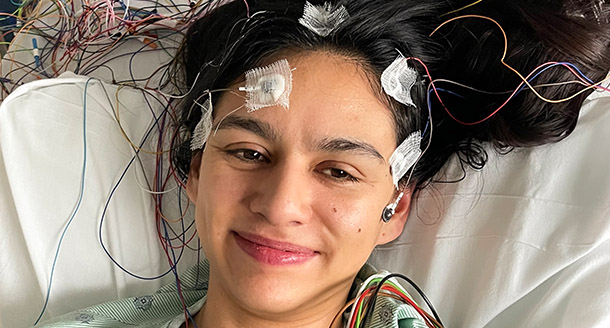Combining emerging technology, team science, and data-sharing to understand and confront the complexities of brain tumors in children, adolescents, and adults.
Project HOPE (High-Grade Glioma-Omics in Pediatric and AYA) and Project GBM CARE (Cellular Analysis of Resistance and Evolution) are two collaborative, intersecting research projects that use single-cell RNA sequencing to learn more about tumor heterogeneity, growth, and evolution. The projects, which are funded through the National Cancer Institute’s (NCI’s) Cancer Center Support Grants following advocacy from the National Brain Tumor Society (NBTS) and partner organizations, aim to identify commonalities in these complex tumors that can serve as new therapeutic targets and the basis for future combinations of treatments.
Background
At the end of 2018, the NBTS, working alongside the Pediatric Brain Tumor Foundation and the Eliminate Brain Cancer Initiative, led advocacy efforts that secured $4 million in funding (3P30-CA014236-47S6) from the National Cancer Institute (NCI) to grapple with this vast heterogeneity of high-grade gliomas (HGG tumors) in adult, adolescent and young adult (AYA), and pediatric populations. The push for funding stemmed from recommendations made by a diverse group of stakeholders, including researchers and patients, who participated in the inaugural U.S. Brain Cancer Mission Roundtable meeting in May 2018.
Leading neuro-oncology researchers from multiple world-class institutions came together to form the Project HOPE and GBM CARE teams. Between 2019 and 2020, the respective teams were able to establish baseline operations for transformative single-cell sequencing platforms and library prep centers, a data commons, and a tissue acquisition center. Early research has also already begun to yield results in the way of emerging patterns and early leads. In late 2020, the NCI extended the funding by $2 million total across both projects for 2021.
Single-Cell Sequencing
Single-cell sequencing approaches have emerged in recent years, providing researchers more precise information about tumors than ever before. Unlike traditional “bulk” sequencing, single-cell analysis allows the study of the various, diverse cell populations that make up a tumor and its surrounding environment. This is particularly important in highly heterogeneous tumors such as high-grade gliomas where a tumor is actually made up of many different types of cells.



